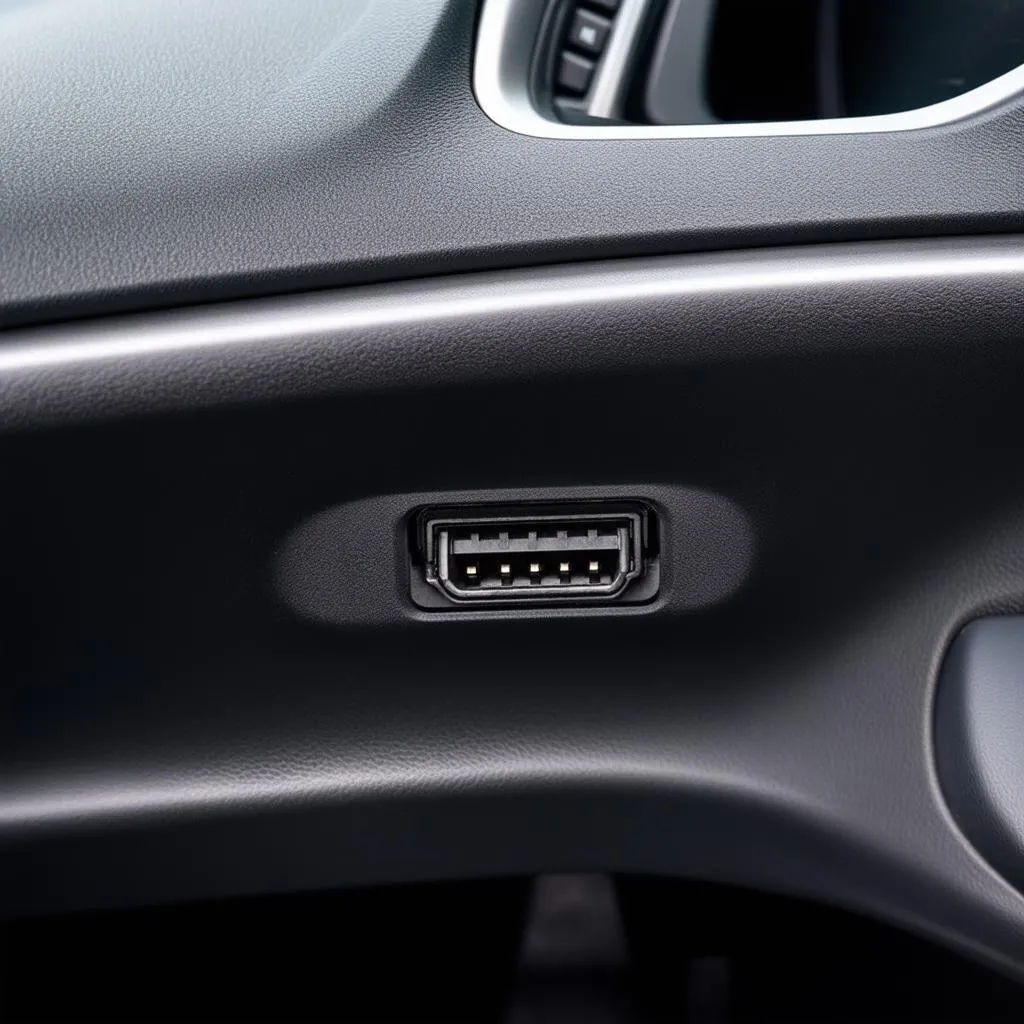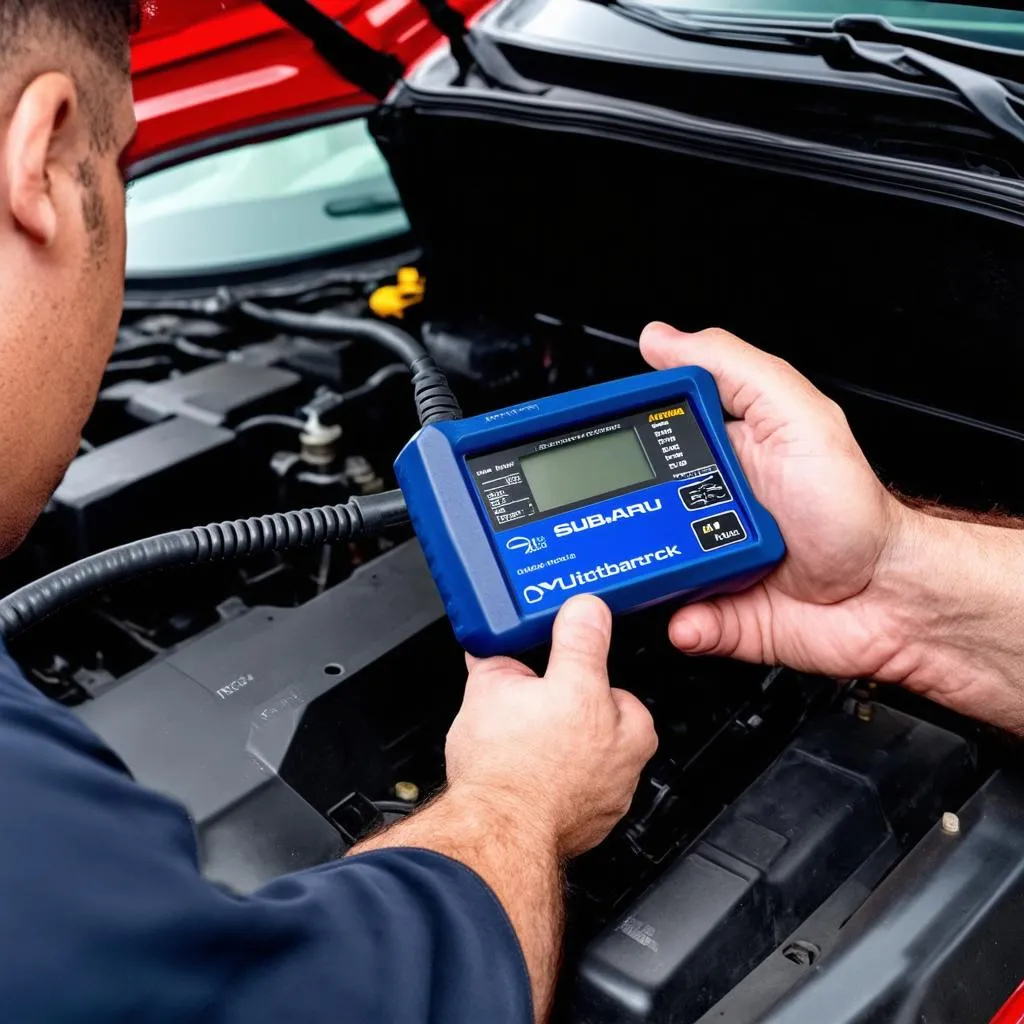You’re in the midst of a road trip, enjoying the scenic views. Suddenly, your 2014 Subaru Outback starts acting up. The check engine light flashes on, and you know it’s time to diagnose the issue. But where do you start? The answer lies in the OBD (On-Board Diagnostics) port, a crucial gateway to understanding your vehicle’s health.
Understanding the Importance of the OBD Port
The OBD port, often referred to as the “diagnostic connector,” is a standard interface found in most vehicles manufactured after 1996. It acts as a bridge between your car’s computer and a diagnostic tool, allowing technicians to retrieve valuable information about the vehicle’s performance.
Think of the OBD port as a doctor’s stethoscope for your car. It allows you to listen in on the whispers of your engine, revealing any issues that may be brewing beneath the hood. It’s a valuable tool for both professional mechanics and DIY enthusiasts.
Where to Find the OBD Port on Your 2014 Subaru Outback
For most 2014 Subaru Outbacks, the OBD port is conveniently located underneath the dashboard, on the driver’s side. It’s usually tucked away in a small compartment, often near the steering column. Look for a rectangular connector with 16 pins.
Here are some additional tips for finding the OBD port:
- Consult your owner’s manual: This is the ultimate resource for finding the exact location of the OBD port on your specific vehicle.
- Check online forums: Subaru enthusiast forums are excellent resources for finding answers to specific questions about your car, including the OBD port location.
- Ask a mechanic: If you’re still having trouble finding the OBD port, a mechanic can point you in the right direction.
Navigating the OBD Port: Common Questions and Answers
Q: What can I do with the OBD port?
A: The OBD port is your gateway to a wealth of information about your Subaru Outback. You can use a diagnostic tool to:
- Read and clear trouble codes: These codes indicate any problems that the car’s computer has detected.
- Monitor live data: You can see real-time readings for various sensors, such as engine speed, coolant temperature, and fuel pressure.
- Perform basic maintenance: Some diagnostic tools allow you to reset maintenance lights, such as the oil change reminder.
Q: What kind of diagnostic tool do I need?
A: There are a variety of diagnostic tools available, ranging from basic code readers to advanced scanners. The best option depends on your level of expertise and needs.
Q: Can I use my phone to access the OBD port?
A: Yes, there are many apps available that allow you to connect your phone to the OBD port via a Bluetooth adapter.
Q: Is it safe to use a diagnostic tool on my own?
A: While using a diagnostic tool is generally safe, it’s important to exercise caution. Avoid making any changes to the car’s settings or programming unless you’re confident in your abilities.
Q: Is it possible to reset the check engine light without a diagnostic tool?
A: While some car owners try to reset the check engine light by disconnecting the battery, this is not a reliable solution. It’s best to use a diagnostic tool to properly diagnose and address the underlying issue.
Q: How can I prevent future OBD problems?
A: Regular maintenance and keeping up with oil changes, tune-ups, and other recommended services can help prevent future OBD issues.
A Word of Caution and a Touch of Feng Shui
As you explore the world of OBD diagnostics, it’s essential to remember that knowledge is power, but it comes with responsibility. Always respect the complexity of your car’s systems and consult a qualified mechanic when in doubt.
Feng Shui, the ancient Chinese practice of arranging objects to create harmony and balance, emphasizes the importance of aligning with the natural flow of energy. When it comes to your car, ensuring smooth and efficient operation aligns with the principles of good Feng Shui. By maintaining your vehicle regularly and addressing any issues promptly, you can promote a harmonious driving experience.
Where to Go for Help
If you have questions about your 2014 Subaru Outback’s OBD port or need assistance with diagnostics, don’t hesitate to contact our team of experts. We offer comprehensive support and guidance to help you keep your vehicle running smoothly.
 Subaru Outback OBD port location
Subaru Outback OBD port location
 Diagnostic tool for Subaru Outback
Diagnostic tool for Subaru Outback
We’re available 24/7 to help with any automotive needs, including diagnostics, troubleshooting, and repair.
Contact us via WhatsApp: +84767531508
Let’s Continue This Journey Together
We’ve explored the location of the OBD port on your 2014 Subaru Outback and its importance in keeping your car running smoothly. Now, it’s your turn to share your thoughts and experiences. Have you ever encountered OBD-related issues in your Subaru Outback? What tips would you add to our guide?
We encourage you to share your insights in the comments section below. Let’s continue to learn from each other and build a community of car enthusiasts who are passionate about understanding and maintaining their vehicles.